All the forests are in the Gascony moors!
Your vacation at Domaine des Oréades is all about relaxation and pampering. After strolling through the Tech ornithological park and around Lac de Sanguinet, why not set off today to discover the moors of Gascony? Gallery forest, original forest, dry heath, mesophilic heath (intermediate between dry heath and wet heath), wet heath, swamps and lagoons. All the forests are in the Gascony moors!
The gallery forest
On the border between Landes and Lot-et-Garonne, this forest grows on the banks of the Ciron and its tributaries. It owes its name to the branches of the trees, which meet above the stream to form a sort of tunnel. The gallery forest consists mainly of alder, oak, beech, hornbeam, willow, locust, hazel and hawthorn. The banks are home to typical wetland ferns, royal fern, marsh iris, scolopendre, liverwort and orchids.
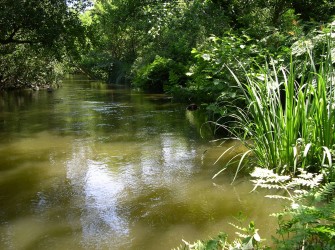
The original forest or oak grove
Generally speaking, pedunculate oak is present on all the Gascony moors, where it has been supplanted by pine seedlings. Oak woods persist along watercourses, dotted with holly and common juniper, or as coppice on wasteland. Pedunculate oak and tauzin also survive on the edges of the pine plots, on the ridges with a fragon undergrowth to demarcate the former cultivated plots and the airial area. There are also numerous woods of robinia, a North American species introduced to France in the 17th century, as well as groves of abalone, which are tending to disappear due to a disease known as graphiosis.
Dry heathland or heather moorland
Paradoxically, it’s near watercourses that you’ll find dry heathland. Heather dominates: callune heather, ash heather. There are also helianthemums, gorse and broom. And don’t forget the magnificent yellow evening primrose flowers along the roadsides.
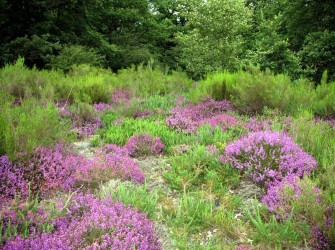
Moist heath or mullein heath
The damp moorland has been largely drained for pine seedlings, but also for corn and market gardening. The most characteristic plant of the humid heath is the molinie (aougà in Gascon, also called aouguiche or aouguithieu in dialect), which invades pine seedlings and reigns under pine forests. There’s also dwarf gorse, heather, shrubs such as dogwood (locally known as bloodroot) and heather, as well as typical wetland trees such as birch and pedunculate oak.
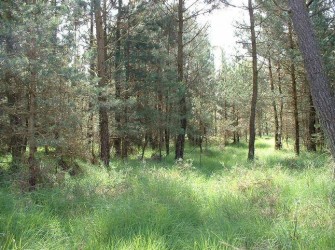
Mesophilic heath or fern heath
Closer to the ocean, on the mesophilic heath, land that is neither totally dry nor totally wet is home to the eagle fern. However, as this is an intermediary environment, it’s not surprising to find, in greater or lesser quantities, the flora of wet moorland, such as dwarf gorse, borage and heather, and that of dry moorland, such as callune and ash heather, European gorse and broom.
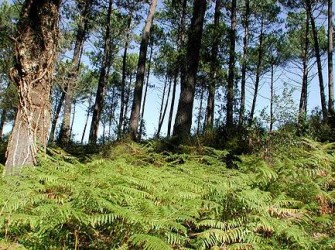
Lagoons, swamps and carnivorous plants
To the north of the Landes de Gascogne, on the Gironde border, lagoons and marshes occupy the slight depressions in the land that are more or less invaded by water from the water table. These include carnivorous plants such as drosera and bladderwort, capable of trapping and digesting small invertebrates, as well as water-wort, false watercress, sedge and all the flora of the wet heath.
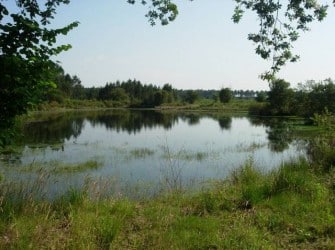
More information on the Landes de Gascogne Natural Park website.





